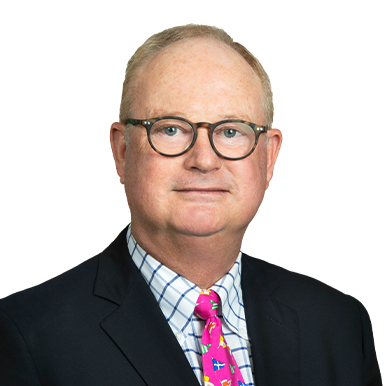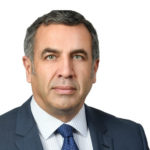Christian Dunleavy, group president, Aspen Insurance Group, said it is important that the current positive market conditions endure. He said the correction is an illustration of how inadequate rates were previously. “It took a long time to get back to rate adequacy and there will be a strong reluctance to give that up,” he said.
“Results have been good but it has only been one year—and one incomplete year, so far.
“What is more, earnings could change quickly if there were a big cat event.” He added there are concerns around other classes of business, especially US casualty.
David Govrin, chief underwriting officer, SiriusPoint, agreed with this point, adding that some of the changes to the structures of treaties, including higher attachment points, has been as important to the positive shift in the market as higher rates. He agreed that there is reason for concern on some lines.
“Not all parts of the market are performing well. Casualty and some specialty classes remain challenging.” He believes this is one reason that discipline will remain. “Reinsurers will work hard to maintain structural discipline after some of the hard work done over the past year. We have seen years of inadequate results. You cannot make up for that in just one year.”
Mark Twite, chief executive officer, AXA XL Re Bermuda, agreed that change is needed in casualty, which remains a concern. He suggested commissions, rates and structures all need examination. But he noted that concerns remain on the property side around secondary perils, despite higher attachment points shielding reinsurers to some extent.
“Both these factors will help keep the market hard. There is a way to go yet,” he said.
Not much new capacity
Stuart Quinlan, chief operating officer and deputy CEO, Conduit Re, noted that despite market conditions being broadly positive, very little new capacity has entered the market. He said there are many reasons for this, including concerns over secondary perils, nuclear court verdicts and significant global political instability. “As such, it is crucial rates remain hard. I do not see softening,” he said.
Chris Killourhy, managing director, QBE Re, echoed the concerns around secondary perils and noted that some are still making their way into the reinsurance market. But he suggested that the market should remember where it was in the autumn of 2022, when worry for cedants wasn’t around rates but whether they would get capacity at all.
“That is not a business model we want,” he said. “We are in a much harder market as a result, but the dynamic outside of property -cat does vary.”
Jesse DeCouto, chief underwriting officer, Canopius Re Bermuda, agreed that secondary perils are a worry and are not that well understood. He reminded the room that reinsurers should be open to taking volatility—but they need to be paid adequately for it.
“That is why there is a cycle,” he said. “We were in a long down cycle, now we are in an upward cycle.” He added that insurers need to price business adequately, “otherwise you end up with more losses in the system”.
John Huff, chief executive officer, Association of Bermuda Insurers and Reinsurers, agreed, noting how important reinsurers are, especially to smaller insurers. “We cannot forget our roots, which is supporting and derisking portfolios for insurers. When they have claims, a liquidity crunch, they need their reinsurers—quickly.”
“Capital has flowed in, only with less fanfare than in the past.” Neville Ching
Drivers
The discussion moved to the nature of this hard market and its drivers, in contrast with previous cycles. Carlos Wong-Fupuy, senior director, Global Reinsurance, AM Best, said that reinsurers have not been under pressure from a solvency perspective. Instead, the main driver of the change in the market has been underperformance.
“That was the reason where we have taken rating actions,” he said. He added that in terms of the improvement of the market, increasing attachment points and the tightening of terms and conditions is as important as higher prices. He believes investor pressure will help maintain market conditions.
“They need to see that a longer-term discipline will stick.” Kathleen Faries
Matthew Britten, senior partner, PwC, agreed that this hard market is different from previous ones in that there has been no major loss or dislocation stemming from a single loss. “Instead, it has been year after year of losses from largely secondary perils,” he noted.
Kathleen Faries, chief executive officer, Artex Risk Solutions, noted that some investors remain wary of the industry’s ability to maintain discipline. This is the reason inflows of capital have been modest, she said.
“They need to see that a longer-term discipline will stick. They don’t want to see hard or soft markets, they just want to be paid adequately in the long term for the risk they take. Investors are better educated now. Re/insurance has to be an attractive asset class over the long term—otherwise we are at a tipping point. Investors want to see discipline for more than one year.”
Britten said he thinks discipline will hold. Twite agreed that there is a collective determination to achieve stability now. “Not for just one year or 18 months, but long term. We must ensure we provide sustainable profits to shareholders.”
Killourhy at QBE Re added that the industry is more sophisticated now in how it considers returns on capital and has a better understanding of what investors really need. DeCouto at Canopius Re Bermuda backed this up, arguing that volatility requires a higher return on capital. “Cat business is capital-intense because of that volatility. We need to be paid for that,” he said.
Casualty challenges
The conversation considered the current challenges in casualty. Wong-Fupuy at AM Best noted that two years ago, the industry was pulling away from cat business and towards casualty—illustrating how quickly things can change.
Dunleavy at Aspen noted that there can be a bifurcated view on casualty. Some players are negative on it, but he stressed it is a question of where you allocate capacity. He also said that casualty cat losses have the potential to change the industry in a much more fundamental way than a property-cat loss, which tends to create a shorter spike.
But he said the industry is right to be wary. “Litigation trends are not changing any time soon. It is a question of discipline.”
Neville Ching, chief executive officer, ReFlex Solutions, said that he thought investors were starting to regain confidence in the industry, a process helped by the better data and analysis available now. “That means we can provide investors with greater clarity,” he said. “Some investors are binary in whether they will invest but capital has flowed in, only with less fanfare than in the past.”
“Casualty and some specialty classes remain challenging.” David Govrin
“Insurers need to price business adequately.” Jesse DeCouto
Twite agreed although he felt that a proportion of investors were still nervous of the industry’s ability to be sustainable in the long term. “Over the past decade we have not had a great track record, but they are waiting in the wings.”
Faries noted that it is a difficult environment to attract investors. Speaking about the insurance-linked securities (ILS) side, she said: “Money is not rolling in. Cat bonds is a sector that has seen a lot of activity but that will change again if spreads tighten. People want it to be a great asset class, but a reset is needed.”
Britten and others agreed that it has been a tough market for raising capital. A number of individuals have put teams together with an abundance of talent and good business plans, he said, but they have failed to raise capital. He noted that investors have many other options, including life reinsurance, and opportunities in other asset classes too.
Brad Adderley, Bermuda Managing Partner, Appleby, agreed that it has been tough to raise capital—very different from what has happened in hard markets in the past. “Investors remain cautious and there is a perception that it takes only one reinsurer to lose discipline on pricing and the market will start to slide,” he said.
Killourhy offered a different perspective. He noted that a portion of capital is keen to leave. “Once they see rates coming down, they could exit,” he said.
Wong-Fupuy added that the players that have been successful raising capital have been established ones. He said the challenge for potential startups has been offering something different—to investors and potential clients. “You might have an excellent business plan, but what is different?”
Britten agreed the challenge of how to differentiate is difficult for reinsurers. “The issue is reinsurers are seen as capital providers. How do you add value to buyers?” he asked.
Dunleavy added: “What will attract capital is good earnings and showing earnings resilience to investors—even in the years of big losses.”
First Published in Intelligent Insurer, September 2024

















